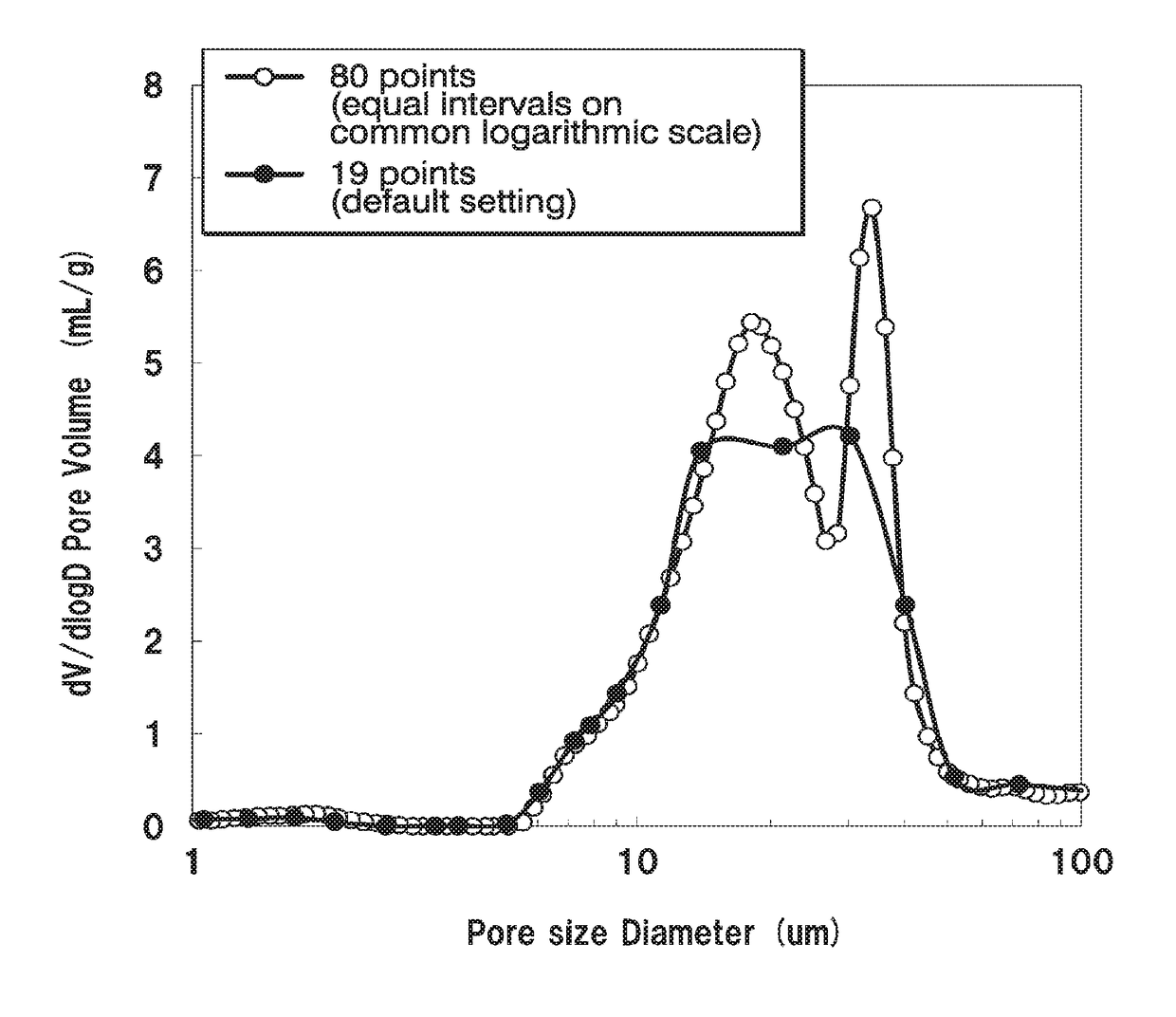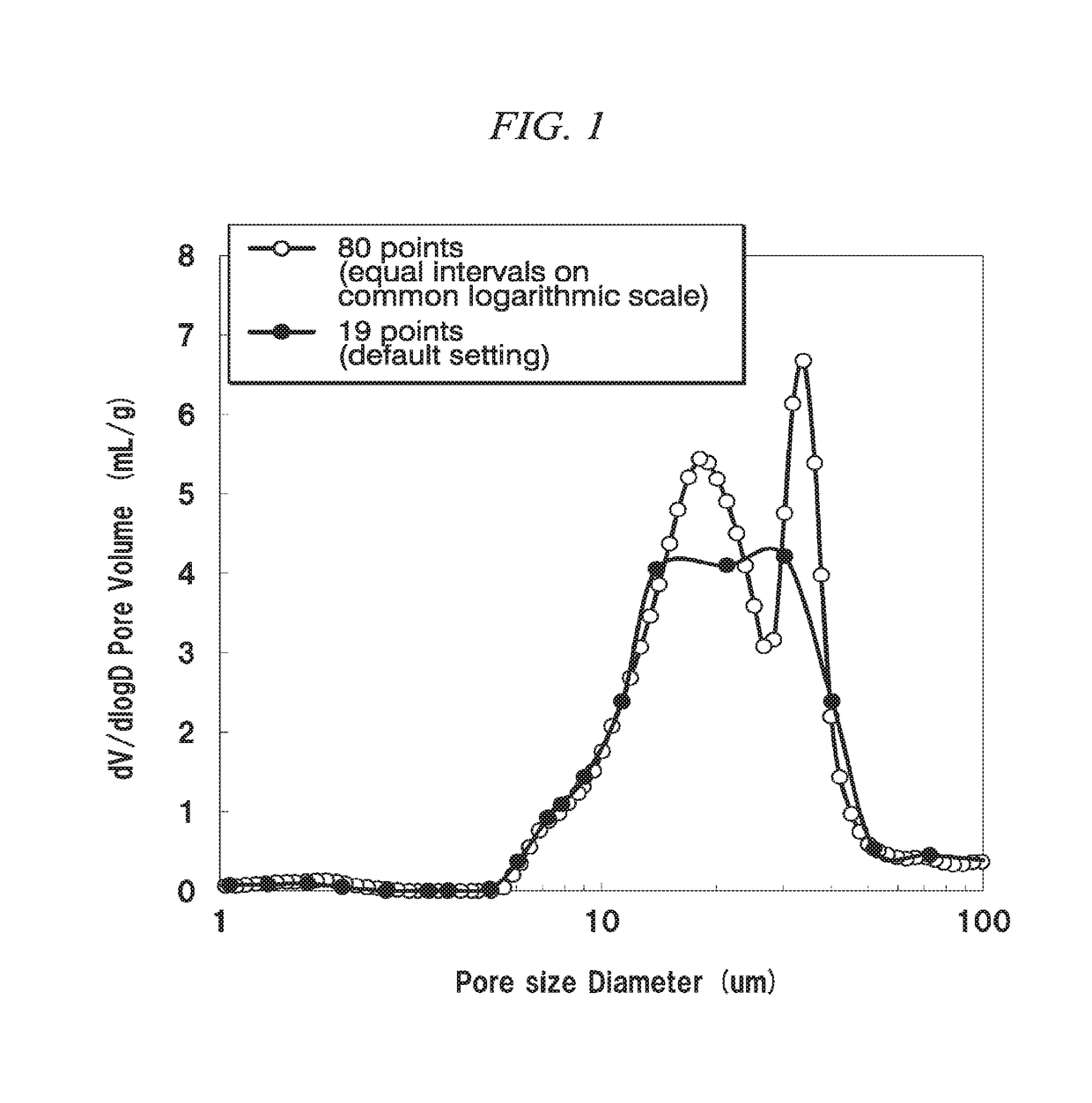Porous electrode substrate, membrane-electrode assembly using same, and polymer electrolyte fuel cell using same
a technology of electrolyte fuel cell and porous electrode, which is applied in the direction of cell components, final product manufacturing, sustainable manufacturing/processing, etc., can solve the problems of sheet tending to warp, no significant improvement in dewatering capability, and neither is sufficient to achieve mechanical strength and dewatering capability
- Summary
- Abstract
- Description
- Claims
- Application Information
AI Technical Summary
Benefits of technology
Problems solved by technology
Method used
Image
Examples
example 1
[0150]Prepared materials: polyacrylonitrile (PAN)-based carbon fibers (product name: Pyrofil TR50S, average fiber diameter: 7 μm, made by Mitsubishi Rayon Co., Ltd.) cut to have an average fiber length of 3 mm, polyvinyl alcohol (PVA) fibers (product name: VPB105-1, fiber length: 3 mm, made by Kuraray Co., Ltd), and polyethylene pulp (product name: SWP, made by Mitsui Chemicals Inc.). PAN-based carbon fibers, polyethylene pulp and PVA fibers at a ratio of 10:3:2 were charged into the slurry tank of a continuous wet papermaking machine with a short wire mesh, water was further added to the tank and the fibers were evenly dispersed and opened. When the fibers were fully dispersed, the web was discharged, passed onto the short wire mesh, and dried with a blower. Accordingly, a rolled carbon-fiber sheet material was obtained to have a width of 1000 mm and a basis weight of 20 g / m2.
[0151]Next, the carbon-fiber sheet material was immersed in a methanol solution with a phenolic resin (prod...
examples [UNK]
Examples 2˜6
[0155]Compositions of carbon-fiber sheet materials in Examples 2˜6 were all the same as that in Example 1. However, in Examples 4˜6, the basis weight of the carbon-fiber sheet material was changed to 40 g / m2, and the number of laminations in the double-belt pressing process was changed from two to one. As shown in Table 1, conditions of temperatures and the pressure of pressing rolls were changed respectively for sampling. Carbonization conditions were the same as those in Example 1.
example 7
[0156]Prepared materials: PAN-based carbon fibers with an average fiber diameter of 7 μm and an average fiber length of 3 mm, acrylic fibers with an average fiber diameter of 4 μm and an average fiber length of 3 mm (product name: D122, made by Mitsubishi Rayon), and polyethylene pulp (product name: SWP, made by Mitsui Chemicals). A sheet material and a three-dimensionally entangled sheet were respectively produced by a continuous wet papermaking method and by entanglement treatment through continuous high-pressure water jetting as described below.
[0157]
(1) Defibration of Carbon Fibers (A)
[0158]PAN-based carbon fibers with an average fiber diameter of 7 μm and an average fiber length of 3 mm were dispersed in water to have a fiber concentration of 1% (10 g / L) and were defibrated through a disc refiner (made by Kumagai Riki Kogyo Co., Ltd.) to make defibrated fiber slurry (SA).
(2) Defibration of Carbon Fiber Precursors (b 1)
[0159]Acrylic fibers with an average fiber diameter of 4 μm ...
PUM
| Property | Measurement | Unit |
|---|---|---|
| length | aaaaa | aaaaa |
| diameter | aaaaa | aaaaa |
| pore diameter | aaaaa | aaaaa |
Abstract
Description
Claims
Application Information
 Login to View More
Login to View More - R&D
- Intellectual Property
- Life Sciences
- Materials
- Tech Scout
- Unparalleled Data Quality
- Higher Quality Content
- 60% Fewer Hallucinations
Browse by: Latest US Patents, China's latest patents, Technical Efficacy Thesaurus, Application Domain, Technology Topic, Popular Technical Reports.
© 2025 PatSnap. All rights reserved.Legal|Privacy policy|Modern Slavery Act Transparency Statement|Sitemap|About US| Contact US: help@patsnap.com



